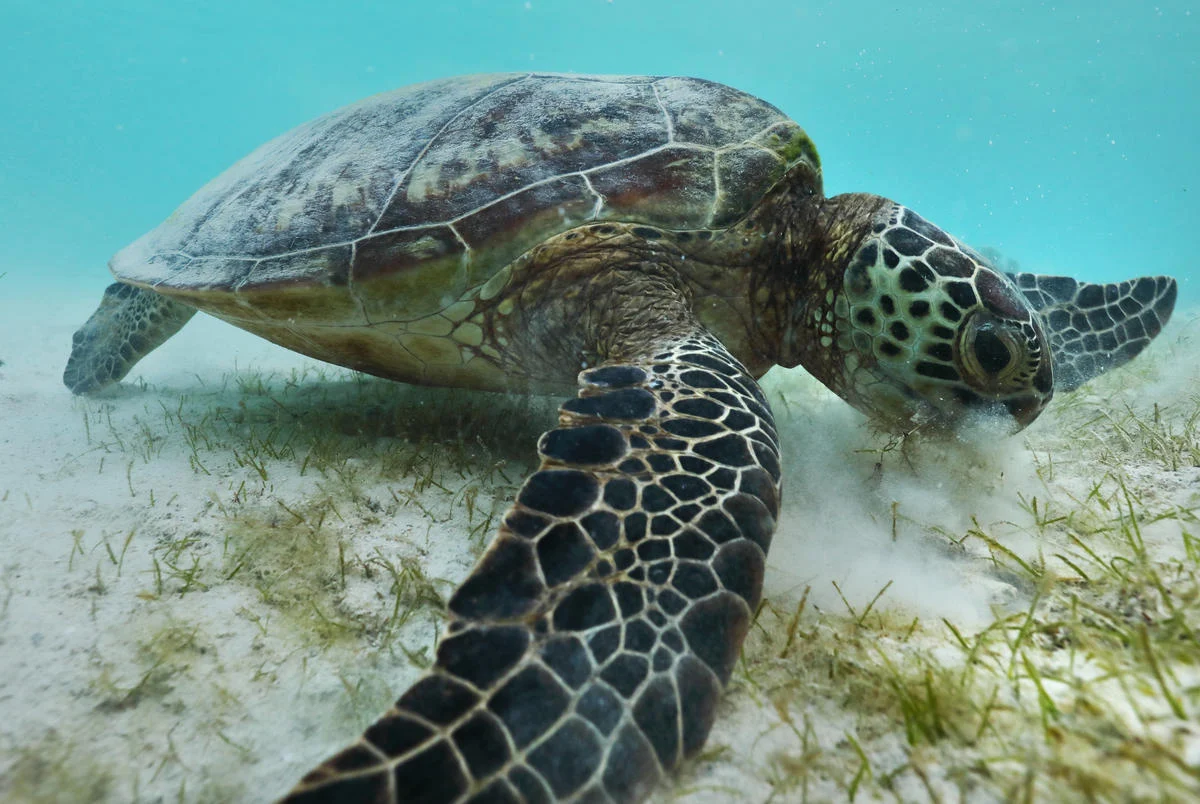When you think of sea turtles, are you also curious about what these cute "sea travelers" like to eat? Today, let's take a deeper look at the food world of sea turtles from a relaxed and professional perspective!
First of all, you may not expect that different types of sea turtles actually have different taste preferences! There are seven major types of sea turtles in the world, each with its own unique eating habits, which is closely related to their body structure and living environment.
Take the green sea turtle as an example. The diet of this sea turtle is a model of vegetarians! They love seaweed and seaweed the most, and are even called "gardeners in the sea". They help maintain the balance of the marine ecology by eating seaweed. But interestingly, young green sea turtles are not strict vegetarians. They occasionally eat jellyfish and small marine creatures as they grow up.

The large leatherback turtle has an even more peculiar taste, and it feeds almost entirely on jellyfish. This eating habit also gives the leatherback turtle a special superpower: immunity to jellyfish venom. But unfortunately, they often mistake plastic bags for jellyfish and eat them by mistake, which also reminds us of the importance of protecting the environment.
Next, let's look at the hawksbill turtle, a beautiful turtle that likes to eat sponges. This choice is particularly important for their ecosystem because most marine life cannot digest these sponges containing toxins, and the hawksbill turtle can digest and control their numbers to maintain ecological balance.
The loggerhead sea turtle and the Kemp's ridley sea turtle are "omnivores" among sea turtles. Their menus are more diverse, and fish, shellfish, crustaceans and even marine plants are their delicious choices. Their strong jaws and powerful chewing ability allow them to easily crush shells and taste the delicious food inside.
As for flatback turtles and olive ridley turtles, they also prefer omnivores, but prefer mollusks and crustaceans, and occasionally taste some marine plants. Their flexible and diverse eating habits enable them to adapt to different marine environments.
Zoologists have found that the eating habits of turtles not only affect their own health, but are also closely related to the marine ecosystem. By controlling the number of certain species, turtles help maintain the balance of the marine food chain, so they are also called "key species of the ecosystem."
By understanding the diet of turtles, we can not only better protect these lovely creatures, but also understand the importance of protecting the marine environment. After all, only a healthy ocean can breed healthy and happy turtles.
Next time you’re walking along the beach, imagine a turtle grazing on seaweed or chasing jellyfish waving at you from afar!
animal tags: Sea-turtles
We created this article in conjunction with AI technology, then made sure it was fact-checked and edited by a Animals Top editor.